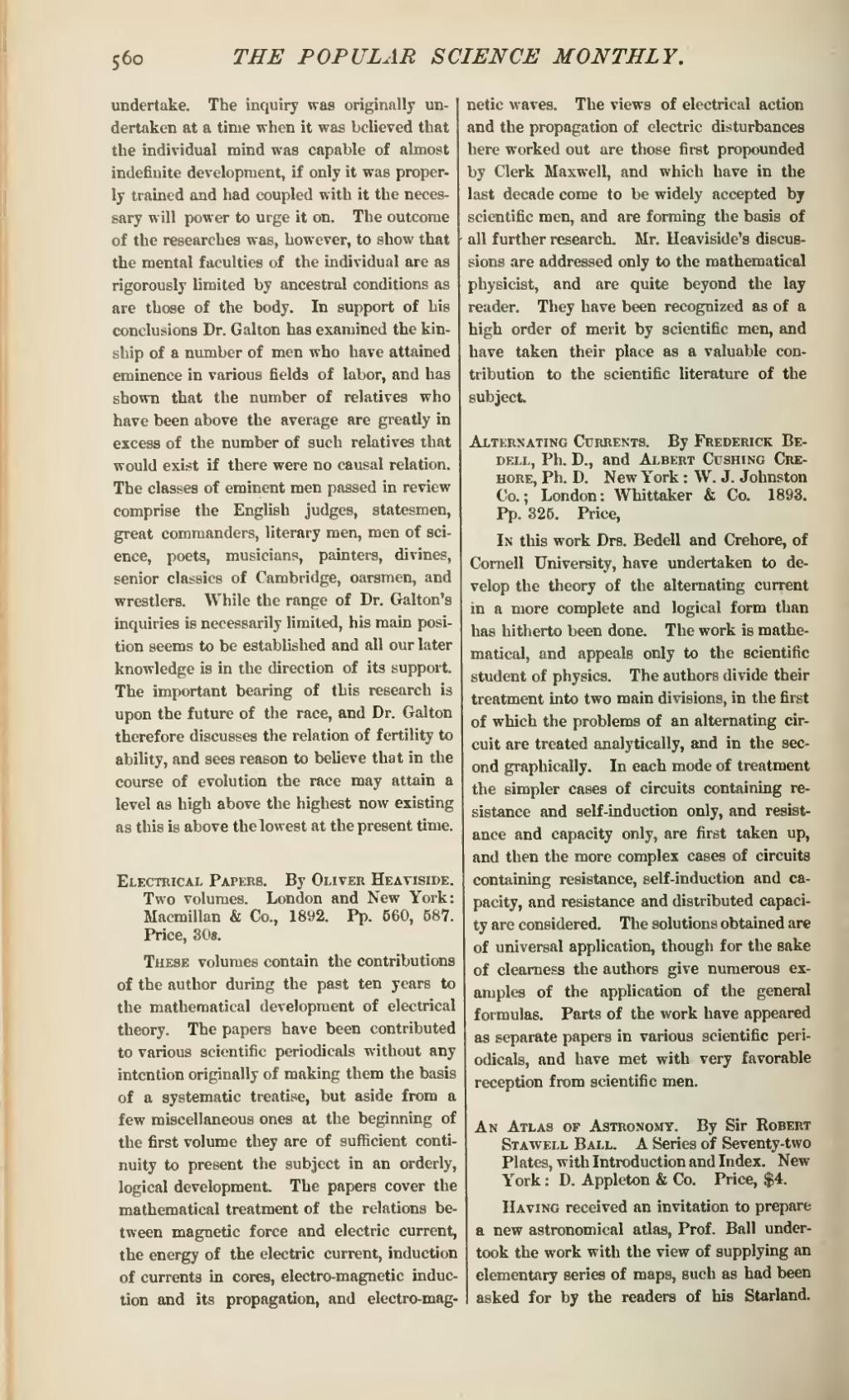undertake. The inquiry was originally undertaken at a time when it was believed that the individual mind was capable of almost indefinite development, if only it was properly trained and had coupled with it the necessary will power to urge it on. The outcome of the researches was, however, to show that the mental faculties of the individual are as rigorously limited by ancestral conditions as are those of the body. In support of his conclusions Dr. Galton has examined the kinship of a number of men who have attained eminence in various fields of labor, and has shown that the number of relatives who have been above the average are greatly in excess of the number of such relatives that would exist if there were no causal relation. The classes of eminent men passed in review comprise the English judges, statesmen, great commanders, literary men, men of science, poets, musicians, painters, divines, senior classics of Cambridge, oarsmen, and wrestlers. While the range of Dr. Galton's inquiries is necessarily limited, his main position seems to be established and all our later knowledge is in the direction of its support. The important bearing of this research is upon the future of the race, and Dr. Galton therefore discusses the relation of fertility to ability, and sees reason to believe that in the course of evolution the race may attain a level as high above the highest now existing as this is above the lowest at the present time.
Electrical Papers. By Oliver Heaviside. Two volumes. London and New York: Macmillan & Co., 1892. Pp. 560, 587. Price, 30s.
These volumes contain the contributions of the author during the past ten years to the mathematical development of electrical theory. The papers have been contributed to various scientific periodicals without any intention originally of making them the basis of a systematic treatise, but aside from a few miscellaneous ones at the beginning of the first volume they are of sufficient continuity to present the subject in an orderly, logical development. The papers cover the mathematical treatment of the relations between magnetic force and electric current, the energy of the electric current, induction of currents in cores, electro-magnetic induction and its propagation, and electro-magnetic waves. The views of electrical action and the propagation of electric disturbances here worked out are those first propounded by Clerk Maxwell, and which have in the last decade come to be widely accepted by scientific men, and are forming the basis of all further research. Mr. Heaviside's discussions are addressed only to the mathematical physicist, and are quite beyond the lay reader. They have been recognized as of a high order of merit by scientific men, and have taken their place as a valuable contribution to the scientific literature of the subject.
Alternating Currents. By Frederick Bedell, Ph. D., and Albert Gushing Crehore, Ph. D. New York: W. J. Johnston Co.; London: Whittaker & Co. 1893. Pp. 325. Price,
In this work Drs. Bedell and Crehore, of Cornell University, have undertaken to develop the theory of the alternating current in a more complete and logical form than has hitherto been done. The work is mathematical, and appeals only to the scientific student of physics. The authors divide their treatment into two main divisions, in the first of which the problems of an alternating circuit are treated analytically, and in the second graphically. In each mode of treatment the simpler cases of circuits containing resistance and self-induction only, and resistance and capacity only, are first taken up, and then the more complex cases of circuits containing resistance, self-induction and capacity, and resistance and distributed capacity are considered. The solutions obtained are of universal application, though for the sake of clearness the authors give numerous examples of the application of the general formulas. Parts of the work have appeared as separate papers in various scientific periodicals, and have met with very favorable reception from scientific men.
An Atlas of Astronomy. By Sir Robert Stawell Ball. A Series of Seventy-two Plates, with Introduction and Index. New York: D. Appleton & Co. Price, $4.
Having received an invitation to prepare a new astronomical atlas. Prof. Ball undertook the work with the view of supplying an elementary series of maps, such as had been asked for by the readers of his Starland.
